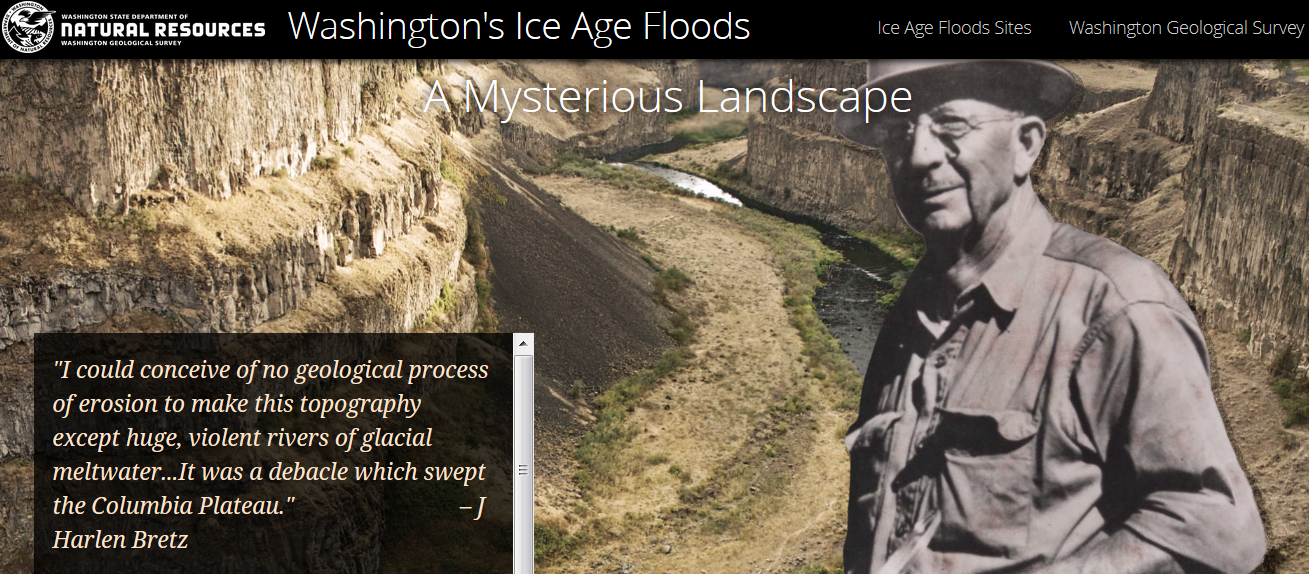3 January 2018
StoryMaps ~ A tool for empowering decision makers and the public
Posted by Shane Hanlon
This is the second in a series of posts by Mike Conway about the use of StoryMaps to tell geologic stories.
“It is good to see State Geological Surveys finding ways to broaden their sharing of new geoscience information, thereby better empowering the public to manage their resources, protect their health and safety, and cherish their natural heritage”. This quote, from Association of American State Geologists (AASG) Officer and Mapping Chair, Harvey Thorleifson of Minnesota, illustrates the importance of State Geological Surveys are using ESRI’s multi-media StoryMap app to tell and enliven their geologic stories.
The Washington Geological Survey is fast becoming a leader in establishing a style of storytelling rich in graphics and videos, knitted together by an entertaining, jargon-free text. In “Washington’s Ice Age Floods” StoryMap, they begin the story of glacial Lake Missoula with, “Our story begins in the canyons (coulees) of eastern Washington. In the 1920s, a geologist named J. Harlen Bretz spent years studying these massive landforms, collectively known as the “Channeled Scablands”. Bretz noted that streams in many of the canyons were far too small to have eroded such large areas. The presence of “dry falls” and massive boulders and gravel bars led Bretz to conclude that these oversized features were created by some sort of massive flood.” The StoryMap includes magnificent and telling images and videos that convey the magnitude of the geologic processes and resulting changes to landform powered by massive floods.

Website for “Washington’s Ice Age Floods” StoryMap.
And the StoryMap approach is well-suited for collaborative story telling. According to Doug Curl, Kentucky Geological Survey (KGS), KGS geologists partnered with staff from Cove Spring Park, outside Frankfort, KY, to build a ‘geologic walking tour’ to enrich visitor’s park experience. Opportunities for collaborating with local parks, educators, social scientists, archaeologists, and social activists to tell engaging stories about the impact of geology on American society are boundless.
-Michael Conway is a Senior Research Scientist with the Arizona Geological Survey


 The Plainspoken Scientist is the science communication blog of AGU’s Sharing Science program. With this blog, we wish to showcase creative and effective science communication via multiple mediums and modes.
The Plainspoken Scientist is the science communication blog of AGU’s Sharing Science program. With this blog, we wish to showcase creative and effective science communication via multiple mediums and modes.